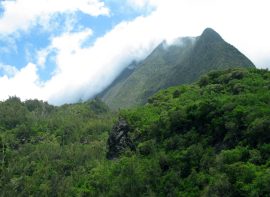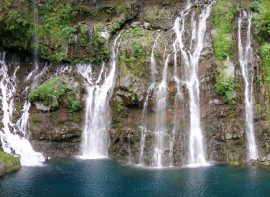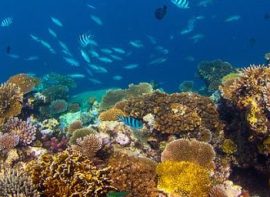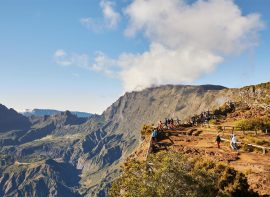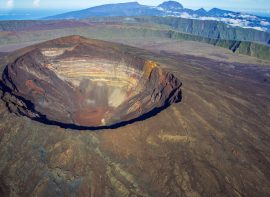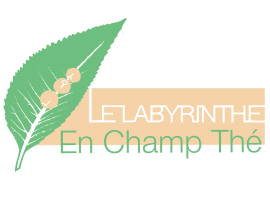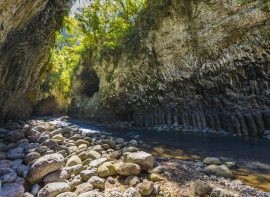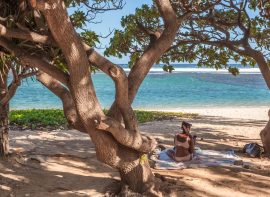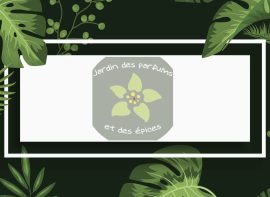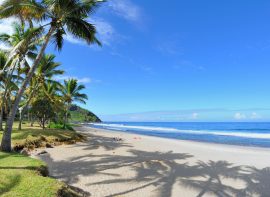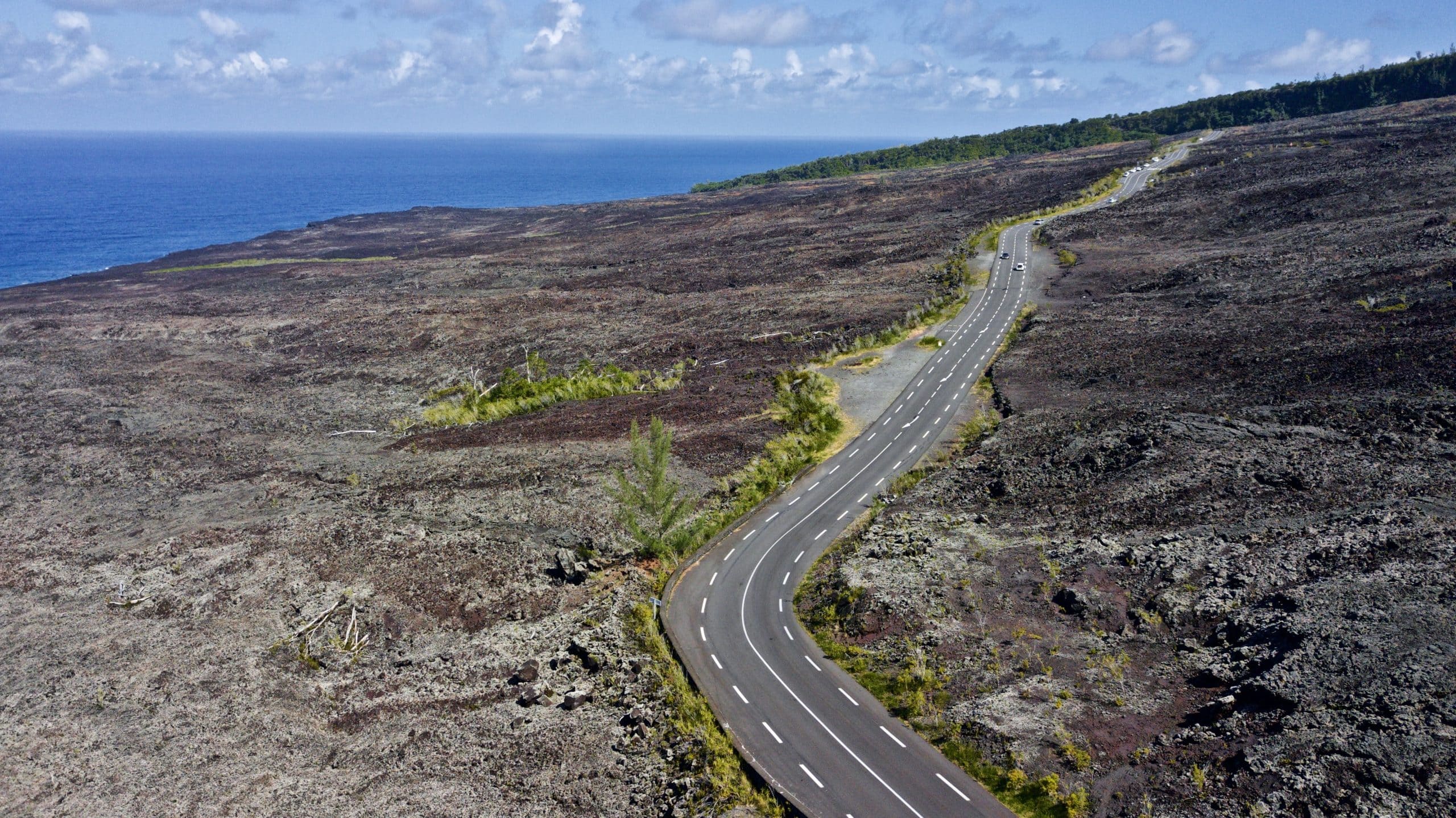
RN 2, Saint-Philippe
Grand Brûlé is the coastal part of the last caldera formed by Piton de la Fournaise, Enclos Fouqué, between Saint-Philippe and Sainte-Rose. It is bounded by the Bois-Blanc rampart to the north and the Tremblet rampart to the south. The asphalt road winds its way through the lava flows along the coast. It is marked by signs dating the lava flows it crosses.
The Grand Brûlé fascinates with its primeval forest interspersed with lava flows. This unique landscape, shaped by the regular flow of volcanic lava down the volcano’s slopes, is part of Reunion’s National Park and UNESCO World Heritage Site.
Lava flows often plunge into the ocean, reshaping the coastline and creating a coastal landscape of rare wild beauty. Out in the open, the lava flows, whether roped, draped or folded, are veritable works of art.
Underground, lava tunnels reveal the bowels of the earth. These tunnels were formed by volcanic flows that cooled at the surface, forming a solid crust but with a fluid core, allowing the lava to continue flowing. When the flow ceases to be fed by molten lava, it empties, leaving a gallery-like cavity. The longest tunnels can reach several kilometers in length. The ceilings of lava tunnels are often adorned with frozen basalt stalactites. You can explore them with a guide, equipped with helmet, gloves and headlamp. This unique experience is both unusual and magical. Many service providers offer these underground tours. Information and reservations at the island’s Tourist Offices.
Don’t miss a visit to Table Point. A path leads to this frozen lava platform, characterized by two lava overhangs resulting from the 1986 flow, which increased the island’s surface area by 30 hectares when it flowed into the ocean!
